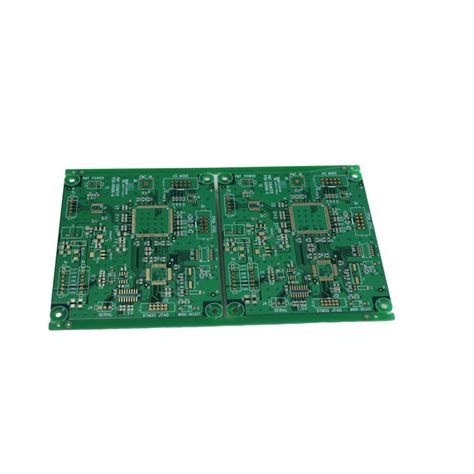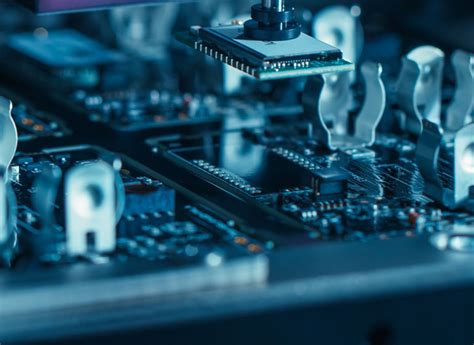Innovative Techniques in Assembled Circuit Board Design
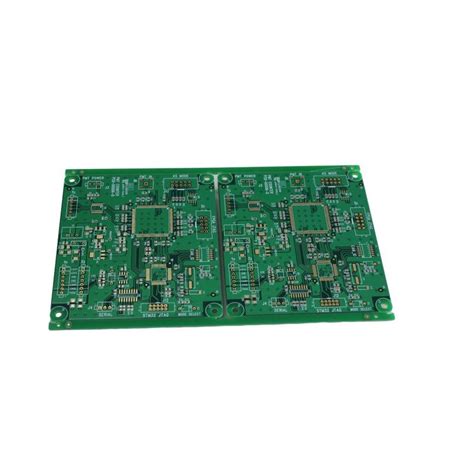
Key Takeaways
As pcb assembly technology evolves, several key innovations have emerged that transform the landscape of pcba design. One significant aspect to consider is the integration of advanced materials and components that enhance the functionality and reliability of assembled circuit boards. For instance, the adoption of flexible circuit boards allows for greater design versatility and miniaturization, catering to the increasing demand for compact electronic devices. Moreover, surface mount technology (SMT) plays a crucial role in optimizing both space and performance, enabling higher component density on assembled circuit boards.
Another noteworthy technique involves automated assembly processes that significantly improve production efficiency while minimizing human error. Implementing automated inspection systems utilizes sophisticated algorithms to ensure quality control throughout the pcb assembly process. This not only enhances performance but also aligns with cost reduction strategies by decreasing waste and rework.
Finally, sustainability in circuit board design has gained momentum, with many manufacturers exploring eco-friendly materials and processes. This dual focus on performance enhancement and environmental stewardship presents a comprehensive approach that meets modern electronic applications’ demands while preparing for future innovations in pcba technology.
| Key Innovation | Description |
|---|---|
| Flexible Circuit Boards | Allows for compact designs and versatility |
| Surface Mount Technology (SMT) | Optimizes component density and enhances performance |
| Automated Inspection Systems | Improves quality control, reduces human error |
| Sustainable Practices | Focus on eco-friendly materials that align with modern demands |
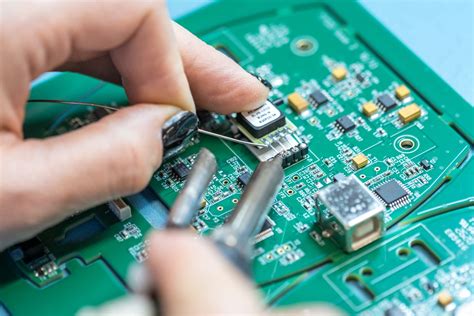
Introduction to Assembled Circuit Board Design
The design of assembled circuit boards, commonly termed pcb assembly or pcba, plays a crucial role in the advancement of modern electronics. A well-designed assembled circuit board is essential for optimizing electrical performance and ensuring the reliability of electronic devices. Recent innovations in this area focus on enhancing functionality while minimizing costs, thereby allowing manufacturers to deliver high-quality products at competitive prices. One effective approach is to incorporate advanced materials and components that improve electrical performance and thermal management, which are vital in high-performance applications. Additionally, utilizing automated processes in pcba can significantly streamline production lines, reducing human error and increasing efficiency.
“Investing in innovative technologies for pcb assembly not only enhances product quality but also fosters development in electronic applications across various industries.”
Overall, the strategic integration of innovative techniques within the realm of assembled circuit board design leads to faster production cycles and superior outcomes that meet the evolving demands of consumers and businesses alike. As this sector continues to grow, embracing these advancements will be key to sustaining competitive advantage in an increasingly tech-driven market.

Key Innovations Transforming Circuit Board Assembly
The landscape of pcb assembly is experiencing rapid transformation, driven by advancements in technology and innovative practices. One standout innovation in pcba is the use of automated assembly techniques, which not only improve accuracy but also enhance production speed. The integration of robotics allows for high-speed pick-and-place operations, minimizing human error and ensuring precise component placement. Additionally, the adoption of advanced materials, such as flexible substrates and higher-quality conductive inks, has enabled the development of more compact and durable circuit boards.
Another key innovation is the implementation of design for manufacturability (DFM) principles that streamline the design phase while optimizing manufacturing processes. This approach ensures that designs are not only functional but also cost-effective to produce. Another exciting trend in the assembled circuit board realm is the use of simulation software during the design process, allowing engineers to predict performance outcomes before physical production begins. This proactive strategy reduces the likelihood of costly revisions later on.
Moreover, techniques such as surface mount technology (SMT) play a critical role in minimizing space on pcbs while still maintaining high levels of performance and reliability. As we advance towards more intricate electronic applications, these innovations in circuit board assembly will continue to redefine what is possible, driving improvements in electronic device efficacy and manufacturing efficiency across various industries.

Performance Enhancement Techniques in Circuit Boards
In the realm of assembled circuit board design, performance enhancement techniques play a pivotal role in ensuring that electronic systems operate efficiently and reliably. One of the forefront strategies in this area involves optimizing pcb assembly processes to reduce the overall footprint while maximizing functionality. Techniques such as using high-density interconnects (HDI) allow for more components to be placed on a smaller board, significantly improving signal integrity and reducing cross-talk between signals. Additionally, the adoption of advanced materials for pcba, such as low-loss dielectrics, contributes to decreasing energy dissipation and increasing operational speeds.
Moreover, implementing active thermal management technologies during the assembly process enhances the thermal performance of circuit boards. These technologies can include incorporating thermal vias or embedded heat sinks that facilitate efficient heat dissipation, thereby extending the lifespan and reliability of components. Additionally, using machine learning algorithms for process optimization can lead to improvements in yield by identifying potential defects earlier in the design stage.
Incorporating these innovative practices not only elevates performance metrics but also aligns with current trends toward miniaturization and increased functionality in modern electronics. As industries continue to demand more compact and powerful solutions, focusing on these pcba techniques will be essential for maintaining competitive advantages in a rapidly evolving technological landscape.

Cost Reduction Strategies for Efficient Production
To achieve significant cost reductions in pcb assembly, manufacturers are increasingly adopting innovative practices that optimize every stage of the production process. One effective strategy is the use of advanced automated assembly techniques, which not only increase precision but also reduce labor costs associated with manual assembly. By implementing high-speed pick-and-place machines, companies can enhance the efficiency of pcba processes, ensuring that components are accurately placed on the circuit boards with minimal waste. Additionally, utilizing modular designs can lead to easier assembly and modifications, allowing for quicker turnaround times and decreasing costs associated with rework.
Moreover, investing in design for manufacturability (DFM) principles can lead to substantial savings by simplifying the design process and minimizing complex components that might complicate assembly. Manufacturers are also leveraging data analytics to refine their operations; by analyzing production data, they can identify bottlenecks and inefficiencies that directly impact costs. As a result, implementing these strategic approaches not only lowers production expenses but also improves overall product quality and consistency in assembled circuit boards. This focus on efficiency makes it feasible for companies to remain competitive in a rapidly evolving electronic market while delivering high-quality pcba products at reduced costs.
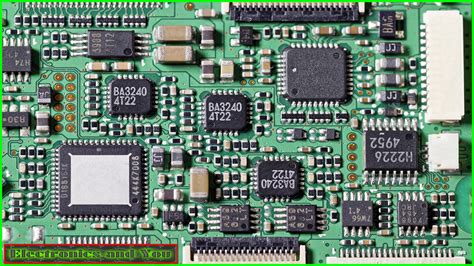
Streamlining Production Processes for Modern Electronics
The efficiency of pcb assembly is crucial in meeting the growing demands of the electronic industry. By implementing advanced manufacturing techniques, companies can significantly streamline production processes, enabling them to meet tight deadlines without compromising on quality. One notable approach is the adoption of automation in pcba production lines, which minimizes human error and maximizes throughput. Additionally, integrating smart technologies, such as the Internet of Things (IoT), allows manufacturers to monitor equipment in real time and anticipate maintenance needs before they become critical. This not only increases productivity but also reduces potential downtime. Furthermore, enhancing design for manufacturability (DFM) practices means that the components are optimized for easier assembly, reducing the number of required assembly steps and thus cutting down overall production time. When combined with lean manufacturing principles, these methods can lead to significant cost savings while maintaining high performance in assembled circuit boards for modern electronic applications. As companies continue to explore these innovative solutions, the evolution of pcb assembly processes will play a pivotal role in shaping the future landscape of electronics manufacturing.
Sustainable Practices in Circuit Board Design
In the evolving landscape of electronics, sustainable practices in circuit board design have gained significant importance. The growing emphasis on environmental responsibility pushes companies to adopt more eco-friendly approaches in their pcb assembly processes. This includes using materials that are both recyclable and biodegradable, which can minimize waste and reduce the carbon footprint associated with electronic products. Furthermore, enhancing the efficiency of pcba by optimizing the layout can lead to reduced material usage and lower energy consumption during manufacturing. Implementing techniques such as embedded components can not only free up space but also contribute to more efficient thermal management. Additionally, utilizing water-soluble soldering technologies during assembly can mitigate the release of harmful substances that often accompany traditional processes. As manufacturers increasingly embrace these sustainable practices, they not only fulfill regulatory obligations but also cater to a growing segment of environmentally conscious consumers, thereby enhancing brand reputation and driving competitive advantages in the market.
Future Trends in Assembled Circuit Board Technology
As the demand for advanced electronics continues to grow, several future trends are emerging in assembled circuit board technology. One notable trend is the integration of IoT (Internet of Things) capabilities within pcb assembly processes, leading to more interconnected and intelligent devices. This shift towards smart technology encourages manufacturers to enhance their design approaches, focusing on miniaturization and efficiency. Furthermore, the utilization of additive manufacturing techniques is gaining traction, allowing for more intricate designs that traditional methods cannot achieve. The increased emphasis on flexible PCBs also signifies a move towards lighter and more adaptable electronic devices, which align with consumer preferences for portability. Sustainable materials are being prioritized as well; with growing awareness around environmental impact, manufacturers are investing in eco-friendly materials and production methods that minimize waste. Overall, the continuous evolution of pcba standards will drive innovation, streamline production processes, and ensure that assembled circuit boards meet the future’s dynamic technological needs while boosting overall performance and cost-effectiveness.
Conclusion
In summary, the advancements in pcb assembly techniques have marked a significant evolution within the field of electronics. As we explore the innovative practices shaping pcba, it becomes evident that the integration of modern technology plays a crucial role in improving both performance and efficiency. Techniques such as automated assembly processes and advanced materials not only enhance circuit board functionality but also contribute to significant cost reductions. The commitment to sustainable practices ensures that these designs are not only optimized for current production demands but are also adaptable for future trends. By embracing these state-of-the-art methodologies, manufacturers can streamline production processes, ultimately leading to the development of more effective and reliable electronic devices. As the landscape of assembled circuit boards continues to evolve, staying abreast of these innovations is paramount for success in a competitive marketplace.
FAQs
What is PCB assembly?
PCB assembly, or PCBA, refers to the process of soldering electronic components to a printed circuit board (PCB) to create a functional electronic assembly. This process is essential for producing reliable electronic devices used in various applications.
What are the key steps involved in the PCBA process?
The key steps in PCB assembly include designing the circuit, fabricating the PCB, applying solder paste, placing components, soldering, inspecting, and testing the assembled board. Each step is crucial for ensuring quality and performance in modern electronics.
How does innovation impact assembled circuit board performance?
Innovative techniques such as advanced materials, precision placement technology, and automated processes greatly enhance PCBA performance. These innovations lead to improvements in signal integrity and thermal management while also ensuring lower rates of defects.
What are some cost reduction strategies for PCB assembly?
To minimize costs in pcb assembly, manufacturers often employ strategies such as optimizing design for manufacturing (DFM), bulk purchasing of components, and utilizing automated assembly equipment. These approaches help reduce material waste and labor costs.
How can production processes be streamlined in electronic manufacturing?
Streamlining production can involve adopting lean manufacturing principles, implementing just-in-time (JIT) inventory systems, and investing in smart technology integration. These methods not only reduce lead times but also improve overall efficiency in PCBA operations.

